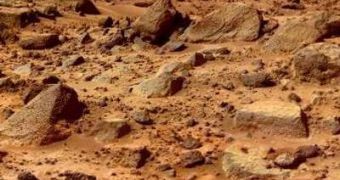Though the Martian ice has nothing to do with its counterpart back on Earth, astronomers have noticed that the first signs of heating have occurred. The seasonal carbon dioxide polar caps, which are formed around the poles in the midst of winter, have begun to melt and even vaporize directly from solid “ice” to gas. The NASA-operated Mars Reconnaissance Orbiter (MRO) has detected this type of changes in several locations across the planet, and mission experts are currently analyzing the climate changes that happen on the Red Planet with the arrival of spring.
NASA Jet Propulsion Laboratory (JPL) expert Candice Hansen-Koharcheck, who is also a scientist in the MRO team, says that, “Spring on Mars is quite different from spring on Earth because Mars has not just permanent ice caps, but also seasonal polar caps of carbon dioxide, familiar to us on Earth as dry ice. What happens on Mars, we think, is that as the seasonal ice cap thins from the bottom, gas underneath the cap builds up pressure. And where gas under the ice finds a weak spot or a crack, it will flow out of the opening, often carrying a little dust from the surface below.”
At the beginning of each winter on Mars, carbon dioxide (CO2) found in the atmosphere at one point instantly solidifies and falls to the ground, giving birth to dry-ice shelves that can be about 3 feet (1 meter) thick. If temperatures suddenly rise at the beginning of spring, then there's a very distinct possibility that the seasonal caps will turn directly into gas, much like what happens back on Earth, when something really hot is poured over thin layers of ice, Space reports.
Another substantial difference between spring here and on Mars is the fact that water flows are not the standard on the Red Planet. On Earth, icy rivers are freed to flow and much of the ice that has been formed over the winter is turned into runoff water. This doesn't happen on Mars, even though experts believe that there may still be some under the surface of the planet, or even in one of its volcanoes. The process of defrosting on our neighbor may seem a bit awkward – columns of gas exiting from cracks in the black, CO2-laden soil.

 14 DAY TRIAL //
14 DAY TRIAL //